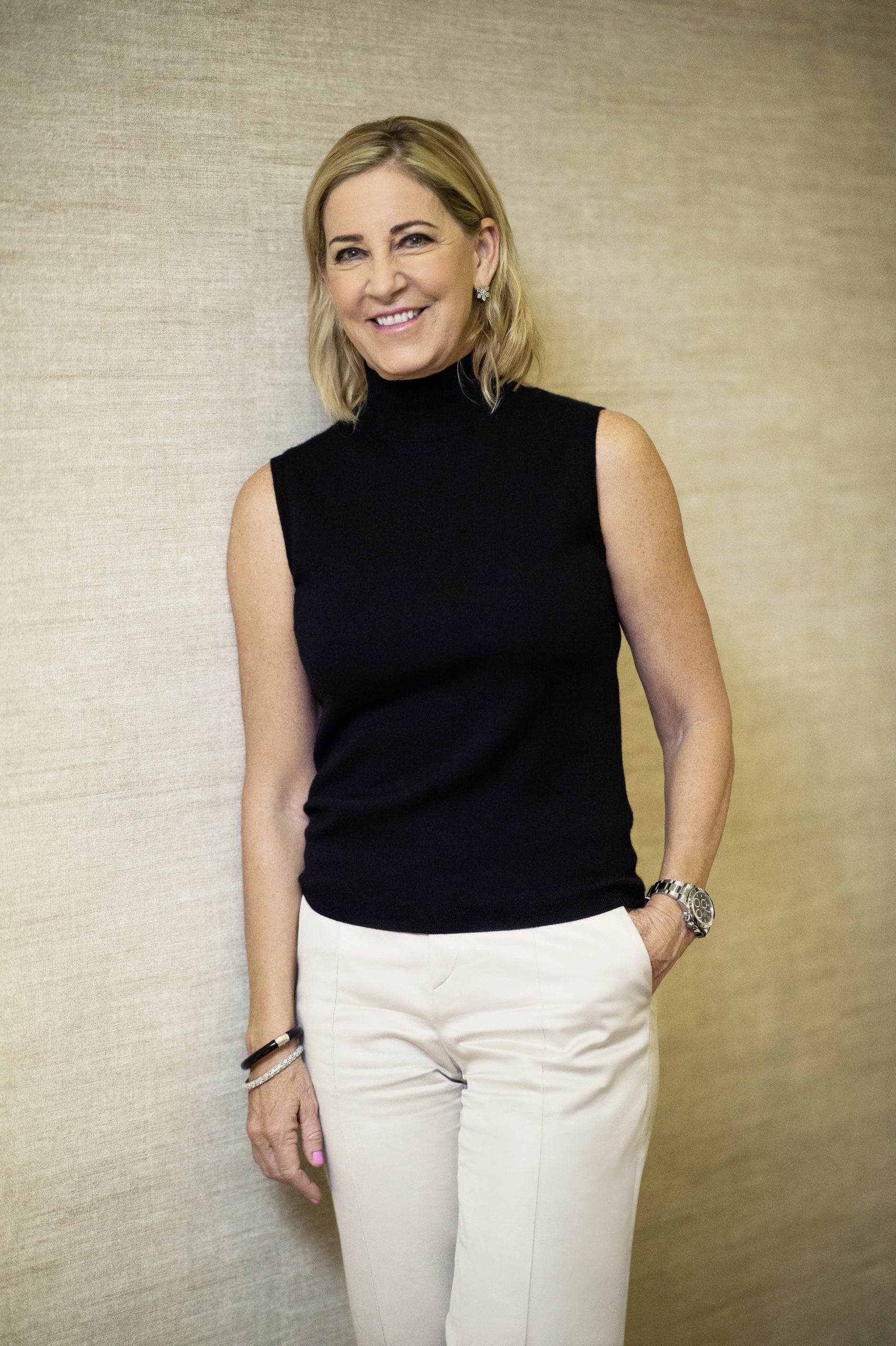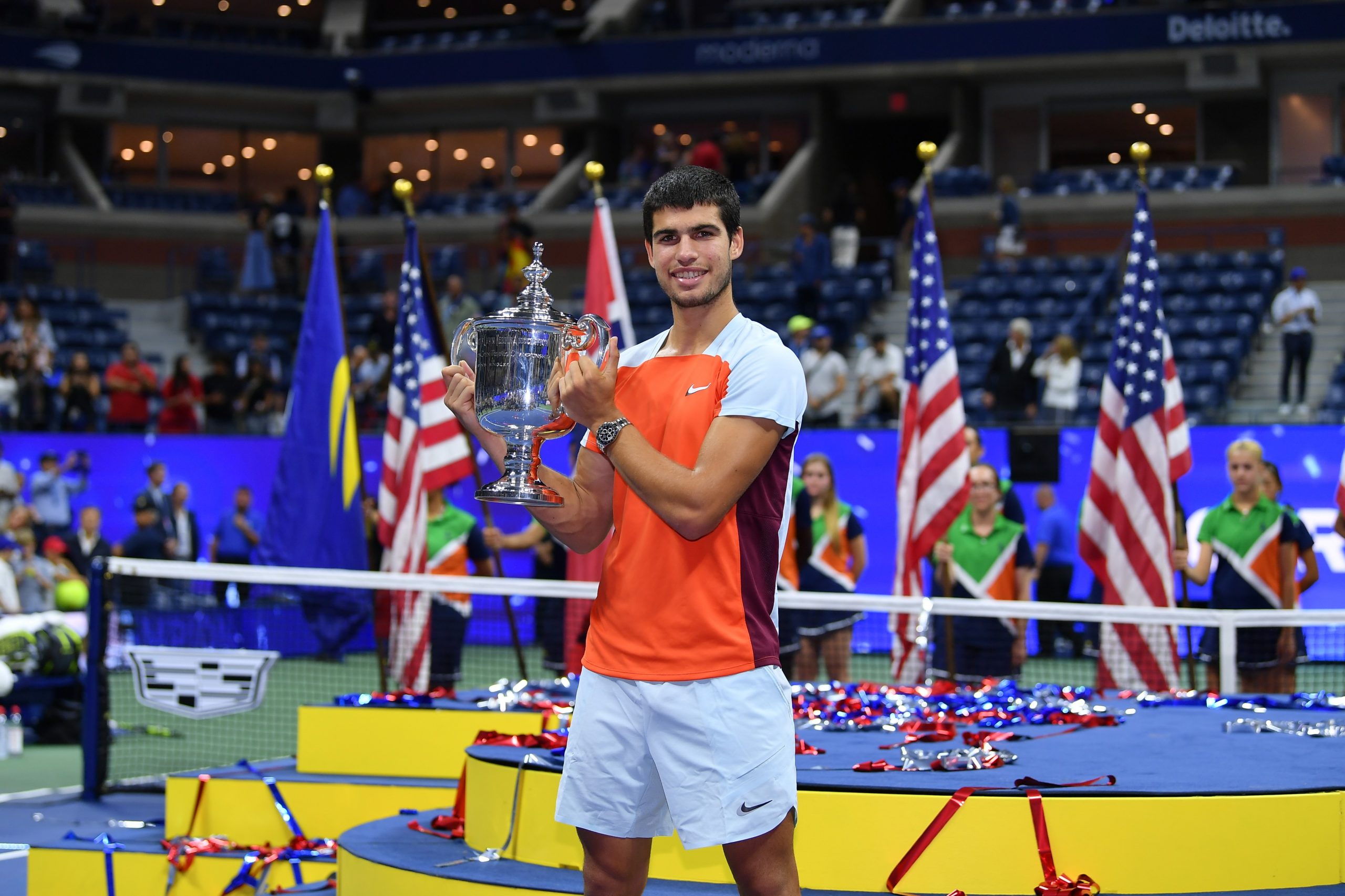Q. Can you tell us about your relationship with Rolex? How did it come about and what does it mean to you?
Chris Evert (CE): I’ve been a Rolex Testimonee for many years now, which is something that is a real privilege for me. We share many common values that relate to me, both during my playing career and now; the key one being the quest for excellence and always striving for the very best. I like that Rolex is timeless; it’s hip yet elegant, dependable yet revered. Rolex is the epitome of what a watch should be and stand for.
Q. What are your overall thoughts about Rolex’s longstanding support of tennis?
CE: I see it as a perfect fit. What better way to enter the sport than through an initial partnership with Wimbledon, the most prestigious event in the history of tennis. To see the relationship grow in the way that it has with Rolex now the Official Timekeeper of all four Grand Slam tournaments has been amazing to not only witness, but also be a part of.
Q. How do you align with Rolex’s perpetual quest for excellence in your career as a tennis player?
CE: I think Rolex’s ethos of the quest for excellence rings well with me and my career. When I set out to be a tennis player, I didn’t know what was ahead, but every time I stepped out on to the court I was striving to be the best I could be on any given day. Following this path throughout my career led me to achieve things I could only have dreamed of. For me, I can really relate to the consistency, efficiency, and longevity of a Rolex watch, because those words describe my career.
Q. During your career, you were ranked World No. 1 for a total of 260 weeks and won 18 Grand Slam singles titles. What was your favorite Grand Slam tournament to play at and why?
CE: This is such a tough question, partly because they all have a special meaning to me in some way. My first Wimbledon meant the most to me because growing up it was always perceived as the biggest and most prestigious Grand Slam tournament to win.
Q. You dominated women’s tennis in the 1970s and 1980s. What was the secret to your success and how did you remain motivated throughout your career?
CE: I think partly it’s because of who I am as a person. I always wanted to strive for more, to get better and be better. I wanted to put the hours in on the practice court so that I was able to perform at the highest possible level at any given occasion.
I also loved to win. I think there are many aspects that kept me motivated during my career but this was definitely one of them. That winning feeling can’t be recreated and as an athlete, it’s one of the best feelings there is.
Q. What three qualities do you think are most important to succeed on the tennis court?
CE: This is a great question as I think there are many different aspects that can make a player succeed. It also depends on the individual player. Some things can work for some, and not so much for others. Some key ones are definitely discipline, mental strength and physical fitness. All three are quite different, but without each, I think it can be hard to reach your highest level.
Q. In 1995, you became the fourth player to be unanimously elected into the International Tennis Hall of Game, following a worldwide ballot of 185 sports journalists; and in 1997, the International Tennis Federation presented you with its highest accolade – the Philippe Chatrier Award – for your contributions to tennis. How proud are you of these achievements and can you describe what it is like to be recognized in this way?
CE: For me, it was a real honour and very special to be recognized in this way. You work so hard throughout your career on the court, doing the absolute most to achieve as much as you can and reach the goals you set, so to then be later awarded an accolade such as this was very special.
When you are playing, you almost don’t think about the legacy you might be leaving and moments like this make you almost sit back and take a moment to realize perhaps what your time on the court meant not only to yourself, but the sport as a whole. It’s a special feeling.
Q. You were one of the first players to play largely from the baseline and were renowned for your consistency, mental toughness and elegant style of play. How do you reflect on the game now in comparison to your playing days? How has the game developed since you retired in 1989?
CE: I think naturally the game has developed as it always does. There are changes, growth and adaptations in so many elements from equipment to sports scientific research, to tactical progressions. I could go on. However, at the end of the day, the fundamental concept of tennis is very much the same. You see shades of older styles of play in some players and very differing styles in others.
That’s one of the reasons why tennis is so fascinating to watch, nothing is ever the same and the game is constantly developing.
Q. You won the US Open on six occasions, reigning as champion from 1975 to 1978 and again in 1980 and 1982. What was it about playing in New York that brought out the best of your ability?
CE: Playing at home was always so special due to the New York crowd and Arthur Ashe Stadium. While every year was different, there were new and exciting qualities in every tournament I played there. Winning six times in my home country is something that will always stay with me.
We’d travel so much throughout the year, so to come back to the United States at that point in the season always made me feel really at home and at ease with my game. Having so many memories on those courts almost gave me an extra push every time I stepped out on to them.
Q. Having been both a player and commentator at the US Open, have you noticed any differences/changes at the iconic Grand Slam?
CE: Of course. Almost every time you come back to a Grand Slam tournament, something has changed, whether that’s the facilities, the court, the weather that year, the game styles, the competitors or the media components. Despite the US Open taking place every year, it’s so different in some ways. I like that aspect as it keeps it exciting!
Q. In recent years, we have seen the formidable rise of a talented group of young Americans – including the likes of Taylor Fritz and Coco Gauff. Who should we watch out for at the 2023 US Open?
CE: It’s great to see so many young Americans doing well. Both Taylor Fritz and Coco Gauff, who happen to be fellow Rolex Testimonees, have had some big wins throughout the calendar years and are definitely ones to watch on the hard courts of Flushing Meadows. Not every player is lucky enough to have a home slam so there’s always something special about a player who is playing in one.
Q. The Arthur Ashe Stadium has come to be defined by its electric atmosphere and has the largest seating capacity in tennis. How, as a professional athlete, do you stay composed on the court amidst the noise and energy generated by the fans?
CE: I think this is definitely something that comes with experience and practice. It’s not a normal scenario for anyone; it’s incredible and something you need to be able to balance as an athlete. The more you are able to play in those big matches in those situations, the more you learn how to stay composed and focus on the task at hand. If you can learn to keep composure in those kind of situations, it will lead you to achieve great things on the court.



















